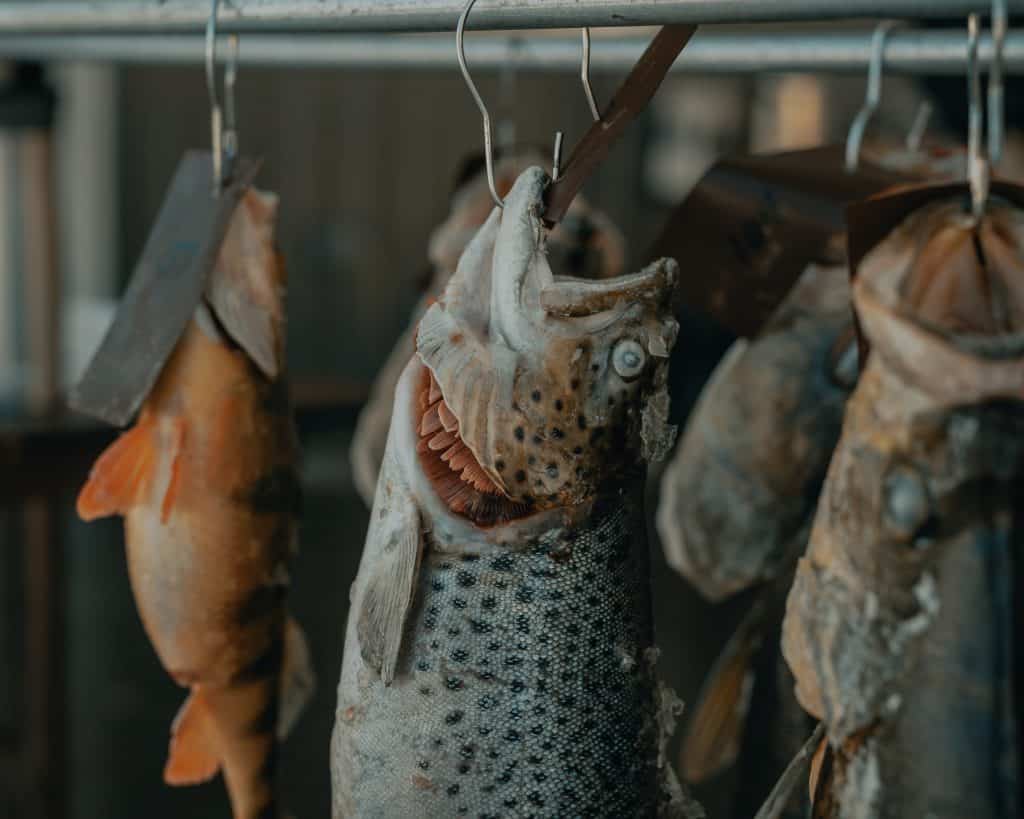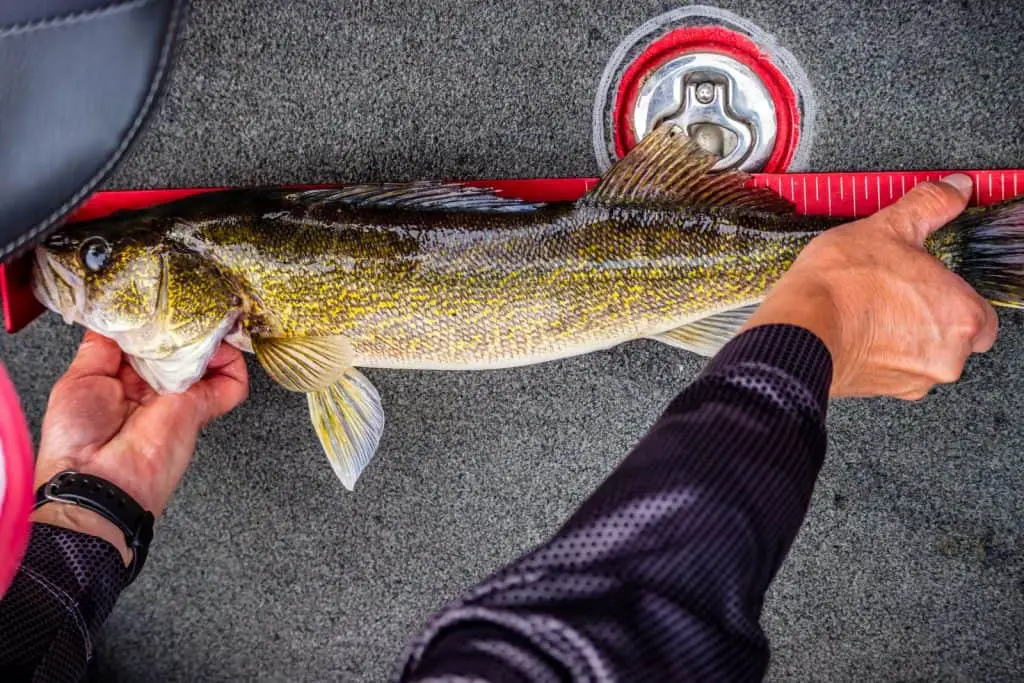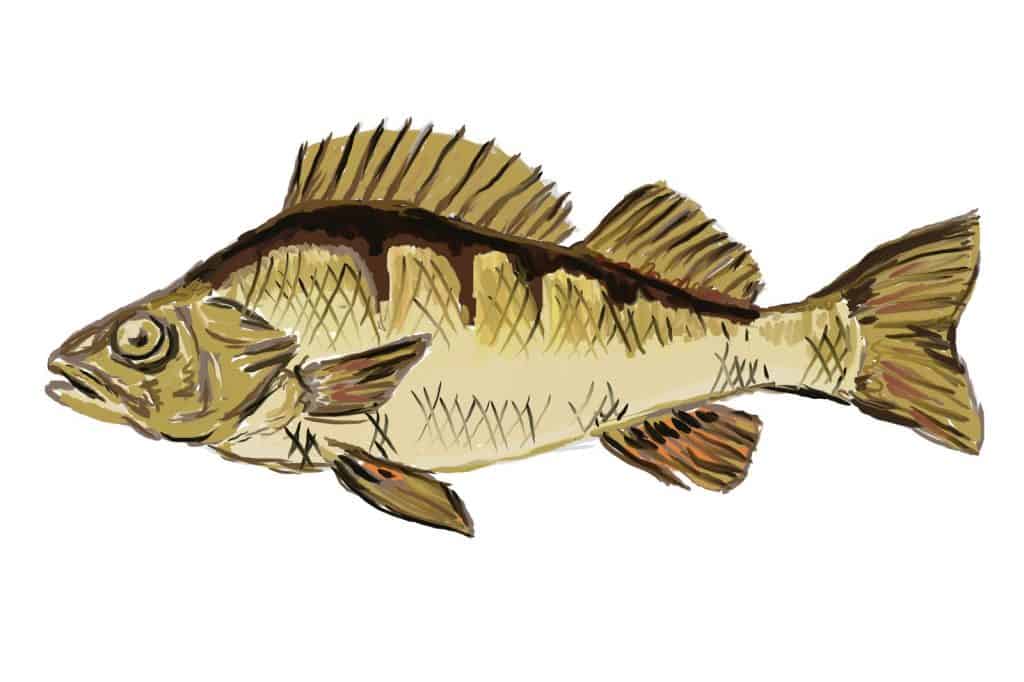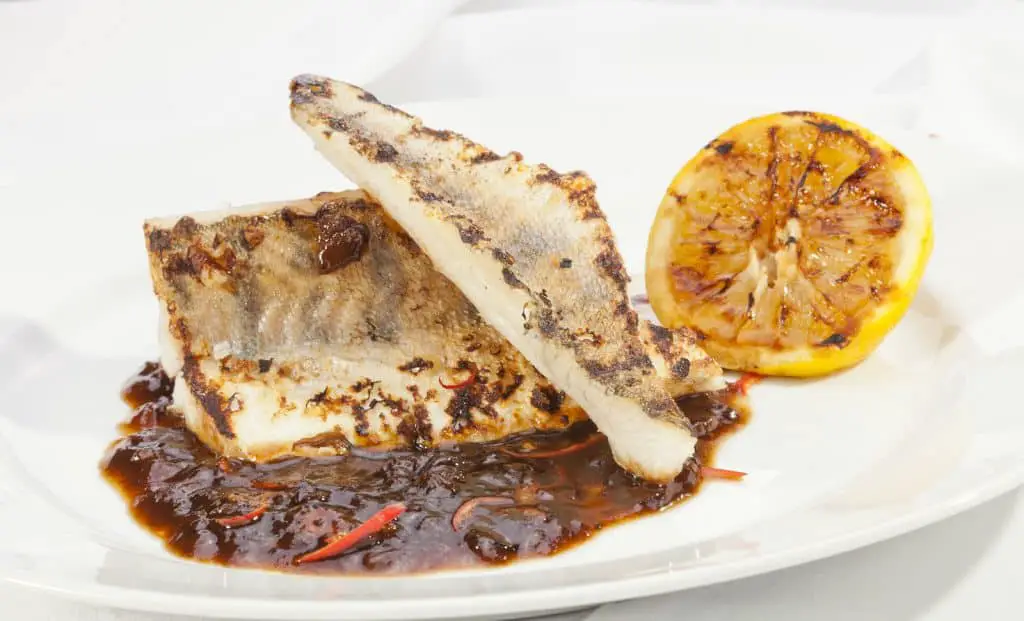What’s the difference between walleye and perch? It is a question that many people ask with differing answers. Some say that perch are exclusively freshwater fish while others insist they can be both fresh water and saltwater. Others argue that walleye are much larger than perch.
The truth of the matter is, walleyes have a similar habitat as perch do, so it really comes down to preference when deciding which one you want to search out when lake fishing!

The main differences between walleye vs perch
You may have heard walleye and perch are two different types of fish, but you’re not sure what the difference is between the two. The main difference between walleye and perch is their size and habitat.
Walleye are also found in freshwater only, and red perch can also be found in salt water, though technically they don’t belong to the perch family.
Habitat and Size
In general yellow perch is smaller than walleye so it’s more common around shallow waters of lakes are streams, where the walleye might not go because of its size.
Walleyes are a freshwater fish that live mostly in North America, Eastern Canada but also in Europe around Russia. It has an estimated population of over twenty million in North America and can also be found as far south as New Jersey and Florida.
The walleye lives primarily in large bodies of water but are occasionally seen swimming upstream into smaller rivers or streams to spawn. They prefer clear waters that don’t have too many weeds around them because they spend most of their time near the bottom looking for food such as crayfish and small fish. Walleyes feed predominantly during daylight hours. They typically grow to be about 3 feet long, weigh from 2-4 pounds, and have a life span of 10-15 years.
Perch are also freshwater fish that can be found around the world. You can find perch both on a lake or the Atlantic. They typically grow to be about 12 inches long with females weighing up to 1 pound and males weighing up to 4 pounds with a lifespan of 5-6 years.
As you can see, walleyes tend to be slightly larger than their counterparts on average. As a result of this major distinction, they also taste different!
Unique characteristics of walleye
They are named after the walnut shell pattern on their skin, which they have to help them camouflage themselves from predators. They also have an olive green to dark brown back with a paler belly coloration and their scales shine attractively under the light.
Their most notable feature that differentiates them from other types of freshwater fishes is the row-like or stripes pattern on their skin called “wale” which helps camouflage themselves when they’re hunting prey at night time.
Male walleyes grow larger than females by about two inches and also live longer.
Unique characteristics of yellow perch
Perches will spend most of their time near shorelines or other shallow areas where there is a lot of cover. This helps to protect them from large fish that might want to eat them.
Yellow perches can be found all over the world, and are one of the most common types of lake fishes.
Unlike walleyes, they do not have a row pattern on their skin. Instead their body has a textured skin with “scales” that helps them to swim faster and their body shape is more similar to trout.
How to fish for walleye and perch
Fishing for walleye is a whole different experience than fishing for perch. You’ll need more bait and higher quality hooks since the mouth of walleye has teeth, while perches don’t have any. They also live in deeper water so you’ll need to use heavier line.

Are walleye and perch good for eating?
Both fish can be eaten but if you are in search for a sustainable fish, walleyes are your best choice. Like other fish species in this family of whitefish, walleye can be dried and smoked for future consumption.
Walleyes typically have richer flesh with more fat content which means it has an oily mouthfeel when eaten raw but yields dryer meat when cooked moist. While perch tastes sweet, oily and more fishy when raw, it is much more moist and has a flaky texture when cooked.
How does walleye taste?
Most anglers say that Walleye taste better. It is considered to have a firm texture, slightly sweet flavor and is more mild compared to perch, which is more like freshwater fish and thus fishy. Walleye tastes good, but it’s sometimes considered to be somewhat too soft, mild and oily by people who like the stronger flavor of yellow perch.
Walleyes are one of the most popular fish in North America with a mild flavor and can be found in many local restaurants’ menu. They have a white flesh that flakes easily when cooked which makes them perfect for frying or baking. Walleyes are easier to catch than Perch so they’re cheaper as well!
What is a good substitute for walleye
A good substitute for walleye is salmon or trout because they are both delicious fish that you can cook in different ways!
How does perch taste?
For many perch is a delicious fish. It has a clean, light taste and is one of the most versatile fish you can eat. Perch fillet is often served fried, but you can also bake it and season it to adjust to your tasting, which fits well with its flaky texture.
Yellow Perch is not only tasty but very healthy! Much like salmon, it has high levels of protein, omega-three fatty acids, vitamin D and B12. Its white meat is also a great substitute for turkey in dishes such as perch loaf.
What is a good substitute for fish from the perch family
A good substitute is Cod, also a white fish, but it’s not as tasty and doesn’t have the versatility of perch. Bass could also be an option, but again, you’re sacrificing taste and versatility for a very similar fish.

How to cook walleye or perch?
Walleye and Perch are both generally considered a delicacy for eating. The yellow perch has a lower fat content than walleye which means that when cooking it at high temperatures (like frying) you’ll need less oil and butter since there are no hard pieces like bones inside the flesh. It also cooks faster too!
Baking
If you want to prepare either fish, we recommend baking them in foil with butter and lemon juice on top! The nice flavor of butter and lemon makes it perfect for a dinner with your family and nothing can go wrong.
Steaming
To steam your fish meat instead, mix water with salt and vinegar in a pot before adding your caught fish so it can be prepared without drying out too quickly. Try walleye paired with tartar sauce or melted cheese as well for an even tastier meal!
Frying
Fish from the perch family are usually served fried or baked with butter, any sauce you want to add on top (like garlic), lemon juice or spices so they can have a fresh and interesting taste. It’s used in many recipes from baked to fried perch fillets.
If you pan fry perch, it’s recommended to make sure you use at least a thin layer of oil in your frying pan so the fish doesn’t dry out. You can also use flour and bread crumbs or cornmeal to make a crust for your fish and fry it. If you want to impress your friends at the dinner table, try making perch with lobster sauce.
Soup
They are also excellent in soups or stews because they hold up well when cooked over low heat.

Conclusion
Walleye and perch are both freshwater fish that can be found in lakes around the world. The main difference between them is their size, as walleye grows to about a foot long while perch maxes out at 8 inches. Another key difference is taste; many people find walleye more flavorful than perch, but it really depends on personal preference.
So which do you prefer? If you’re unsure of what type of fishing trip would suit your needs best or want help deciding which lake to go next time you head out for an outing with friends or family members, feel free to reach out and we’ll give you some advice!
Finally, make sure to check out our related posts on the differences between haddock vs cod and salmon vs trout.